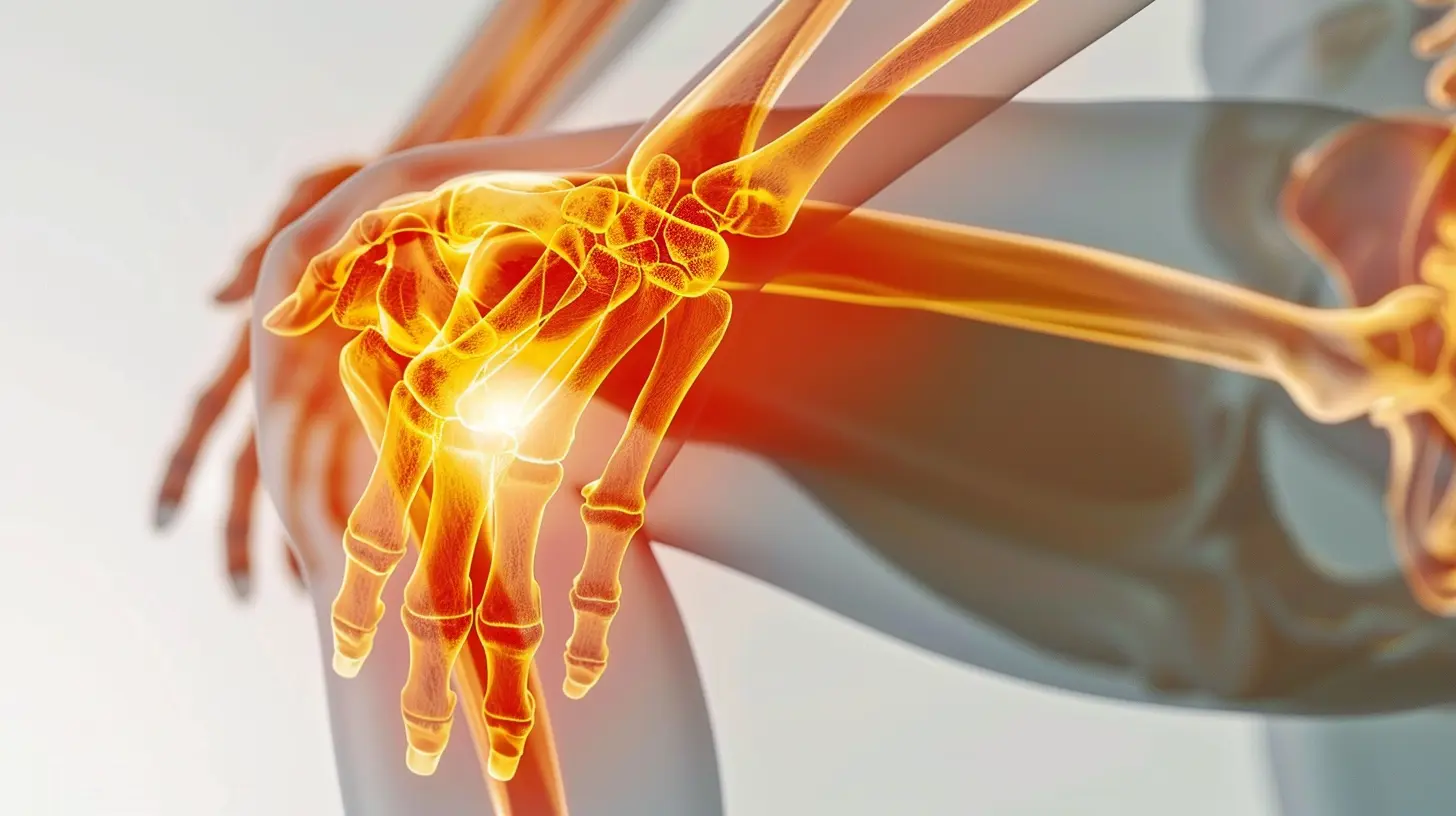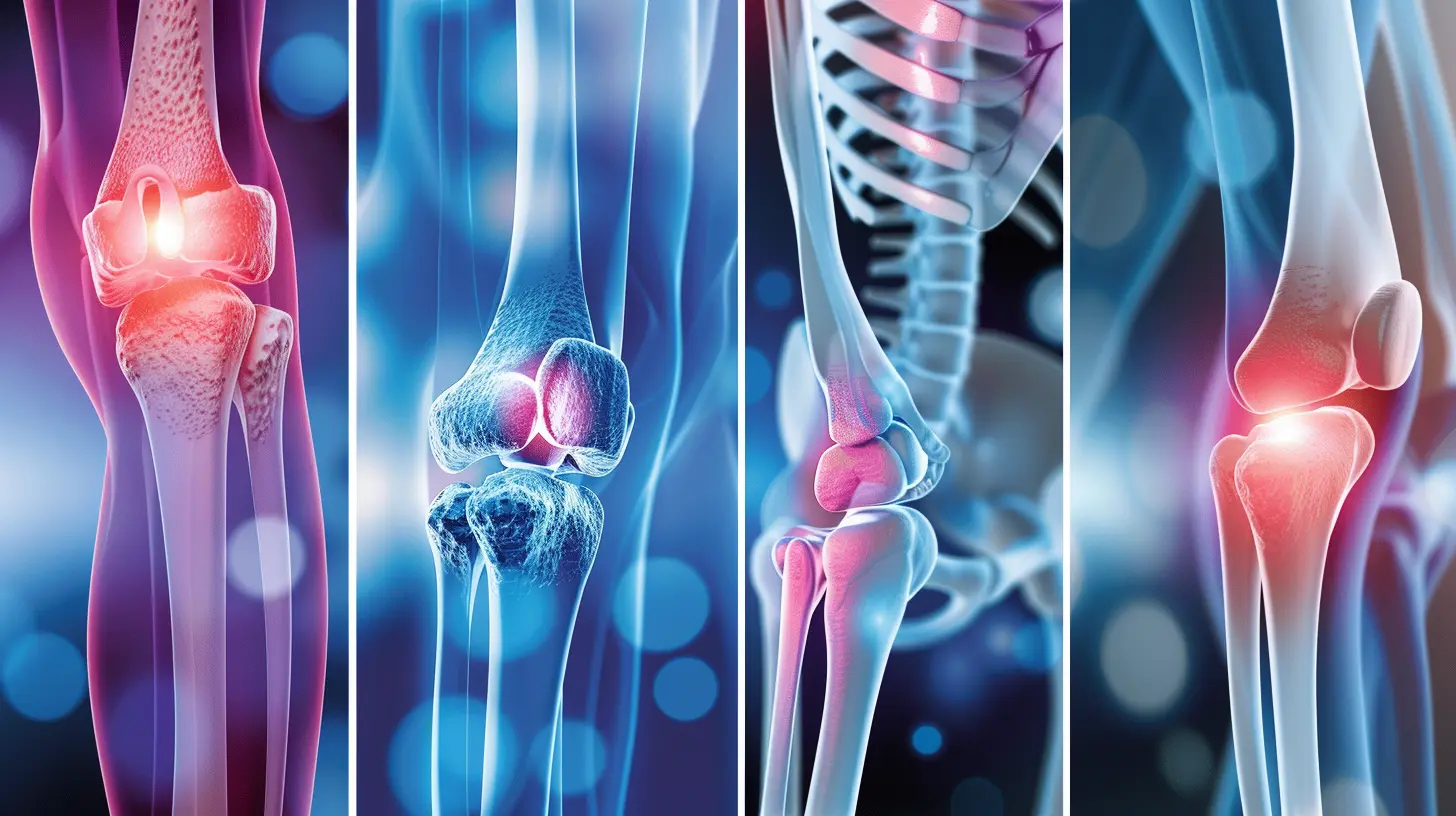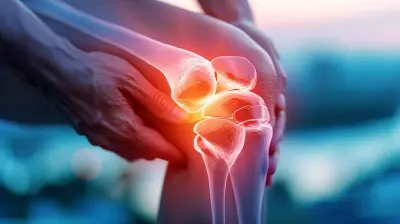How to Care for Your Joints After Intense Workouts
21 October 2025
So, you've just crushed a killer workout. Muscles are pumped, you're drenched in sweat, and mentally—you’re on top of the world. But hold on. While your muscles might be thanking you, your joints? Not so much.
Joints take a serious beating during high-intensity training. Whether you're lifting heavy, sprinting, jumping, or pushing through a long-distance run, your joints are doing a whole lot of silent work behind the scenes to support your movements.
Taking care of your joints after these grueling sessions is just as important as the workout itself. Why? Because healthy joints = longevity in fitness. You can't keep chasing gains or clocking miles if your knees, shoulders, or hips are falling apart.
Let’s dive into how you can give those overworked joints the love and care they deserve post-exercise.
Why Post-Workout Joint Care Matters
Before we get into the how, let’s talk about the why. Think of your joints as the hinges in a door. If you slam that door repeatedly (hello, high-intensity training), what happens? The hinges wear out faster unless they’re properly maintained.After intense workouts, joints can become inflamed, stiff, and even slightly damaged. Over time, if you don’t manage the wear and tear, you risk developing chronic pain or even serious injuries like tendonitis, bursitis, and early-onset arthritis.
Joint care isn’t just for the aging athlete—it’s for anyone who wants to keep moving well for the long haul.
1. Cool Down Properly
You might be tempted to flop onto the floor after your final rep or sprint, but skipping your cooldown is a rookie mistake.Why is cooldown so important?
A proper cooldown gradually brings your heart rate down and prevents blood from pooling in the extremities. But here's the kicker: it also reduces joint stiffness and aids in post-workout recovery.What should a good cooldown include?
- Gentle stretching – Focus on your major muscle groups and joints you just worked.- Light cardio – A 5–10 minute walk or a slow pedal on a stationary bike helps flush out metabolic waste and keeps your joints lubricated.
So next time, don’t bail. Those extra 10 minutes matter.
2. Apply Cold Therapy
Ever seen athletes dunk their legs in an ice bath? There’s a reason for that.Cold therapy, or cryotherapy, helps reduce inflammation around the joints by constricting blood vessels. It’s especially helpful if you’ve gone extra hard on your knees, ankles, or shoulders.
How to Use Cold Therapy:
- Ice packs – Apply to sore joints for 15–20 minutes post-workout.- Ice baths – Optional, but effective, especially for lower body fatigue.
- Cold showers – A quicker, more accessible option for whole-body recovery.
A bag of frozen peas can work wonders in a pinch!
3. Stay Hydrated
You’ve probably heard this a million times, but hydration is HUGE when it comes to joint health.Why?
Joints are surrounded by synovial fluid, which acts like oil in an engine—it reduces friction and keeps everything moving smoothly. Dehydration thickens this fluid, making joint movement stiffer and more painful.So, guzzle that water before, during, and after your workout. Aim for at least half your body weight in ounces daily, and add more if you sweat a lot.
4. Incorporate Anti-Inflammatory Foods
If you’re not paying attention to what’s on your plate post-workout, you’re missing a chance to fight inflammation from the inside out.Some joint-loving superfoods:
- Fatty fish (like salmon and sardines) – Packed with omega-3s- Turmeric – Natural anti-inflammatory compound called curcumin
- Berries – Rich in antioxidants
- Leafy greens – Loaded with vitamins C and K
- Nuts and seeds – Provide healthy fats and minerals
Think of your kitchen as a pharmacy. What you eat can either help your joints heal or make the inflammation worse.
5. Supplement Smartly
Sometimes, what you eat isn’t enough—especially if you're training like a beast. Supplements can fill the gaps.Consider adding these to your routine:
- Glucosamine & Chondroitin – Key building blocks of cartilage- Collagen – Helps maintain the integrity of cartilage and connective tissue
- Omega-3 fatty acids – Help reduce joint inflammation
- Vitamin D – Supports bone and joint health (especially if you're indoors a lot)
But remember, supplements are just that—supplemental. They work best when paired with good nutrition and smart recovery habits.
6. Don’t Skip Rest Days
This might be hard to hear if you’re in grind mode, but rest is where the magic happens.Intense workouts put stress on your joints. Without proper time to recover, that stress can compound into injury. It’s like driving your car non-stop without ever changing the oil—eventually, something gives.
Rest doesn’t always mean doing nothing.
- Try active recovery: light yoga, walking, or swimming.- Or go full rest: Netflix, stretchy pants, and couch time (no guilt!).
Rest isn’t a setback, it’s a superpower.
7. Foam Roll and Mobilize
Mobility tools like foam rollers, massage balls, and massage guns aren’t just trendy—they're game-changers for joint recovery.Benefits include:
- Increasing blood flow and oxygen to joint areas- Breaking up adhesions and fascia tightness
- Improving range of motion
Spend 10–15 minutes post-workout targeting key joints like hips, knees, shoulders, and ankles. It can hurt (the good kind) but pays off big time.
8. Wear the Right Gear
Shoes that have seen better days? Worn-out training gear can mess with your posture and alignment, placing more stress on your joints.Tips for picking the right gear:
- Choose shoes based on your activity (cross-training, running, lifting)- Replace them every 300–500 miles or every 6–8 months of regular use
- Use braces or compression wear if you're rehabbing or need extra support
Think of gear like armor. If it’s cracked or broken, it won’t protect you.
9. Get Enough Sleep
Sleep is your body's ultimate recovery tool. When you snooze, your body gets busy repairing muscles and replenishing fluid in joints.Aim for 7–9 hours of quality sleep each night. Can’t sleep that long? Try improving sleep quality:
- No screens 1 hour before bed
- Cool, dark room
- Consistent sleep and wake times
Treat sleep like part of your training plan, not something you get around to.
10. Train Smart
This might be the most important tip of all. Sometimes, joint issues don’t come from recovery mistakes—they come from poor training habits.Here’s what smart training looks like:
- Warm up properly before going hard- Use good form—even when you're tired
- Progress gradually, don’t leap to heavy weights or high volume too fast
- Listen to your body—pain is a signal, not a challenge to overcome
No PR is worth a blown-out knee or chronic pain.
It’s a Marathon, Not a Sprint
At the end of the day, your joints are with you for life. Treat them like the MVPs they are, and they’ll support you for decades of movement, performance, and everyday adventures.You’re putting in the work. You’re chasing goals. Just don’t forget—recovery is part of the grind too.
Your joints will thank you tomorrow.
all images in this post were generated using AI tools
Category:
Healthy JointsAuthor:

Laurie Barlow
Discussion
rate this article
1 comments
Cooper Soto
Great tips! Taking care of your joints is essential for staying active and feeling fantastic! 😊👍
October 30, 2025 at 5:43 PM

Laurie Barlow
Thank you! I'm glad you found the tips helpful. Healthy joints are key to staying active! 😊🏃♂️


